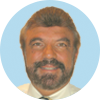Since it is not unusual to observe an individual patient being evaluated by several pulse diagnosticians and be given as many different diagnoses as there are evaluators, one must question this form of ancient diagnosis and if it will survive into the new millennium.
Please bear in mind my numerous personal observations of pulse diagnosis spanning 30 years in scores of Asian countries. I personally have the highest regard for the Asian master of acupuncture in the evaluation of disease by pulse diagnosis. However, I have second thoughts concerning the same practice by contemporary training and standards.
When Nakatani first developed his procedure of electronic evaluation by measuring skin conductance at the yuan (source) point of the wrist and ankle, he created one of the most significant acupuncture diagnostic methods that has yet to be created in either contemporary or traditional acupuncture. When one compares the findings of learned Asian masters of acupuncture and pulse diagnosis (who palpate the 12 pulse positions for as long as 15-20 minutes per wrist) with the findings of ryodoraku, they are most often identical or extremely close.
Of course, electronic evaluation of the body yuan points does not determine the specific 28 pulse characteristics which must be ascertained in proper pulse diagnosis. It does, however, determine if an individual meridian is out of balance with the 12 primary meridians. Unfortunately, the majority of contemporary pulse practitioners only recognize and concern themselves with less than six pulse qualities, as opposed to the historic 28.
When one finds an elevated or deficient meridian on ryodoraku, the treatment approach is one of tonification or sedation, to specific acupuncture points known to replenish or deplete biomagnetic energy to create balance in the meridians. Electronic measurements are ascertained by examining the 24 specific yuan points of the wrist and ankles for only three seconds per point.
One of the most significant discoveries of ryodoraku was the discovery of split meridians. For example, in pulse diagnosis, the pulse of the spleen meridian is always in the right wrist, whereas the gallbladder, kidney and liver are always in the left wrist. When one ascertains a diagnosis from the pulse qualities, it can reveal a multitude of factors, but it cannot and does not reveal what the ryodoraku has discovered.
Ryodoraku evaluation has revealed that meridians exhibit a splitting between left and right sides of the body, especially in severe cases, which is unknown in pulse diagnosis. As ryodoraku measures the yuan points of both sides of the body, it is able to detect a diagnostic situation that was virtually unknown until the invention of the ryodoraku. By utilizing the luo point of the split meridian, a correction can be made in a split (left to right) meridian. Luo points classically and traditionally are used to link a coupled meridian, such as lung/large intestine. In auriculotherapy, this correction between splits can be treated by the master oscillation point.
The system of ryodoraku was renamed "electro-meridian imaging" (EMI) by myself in 1982. It gave the procedure a more medically acceptable contemporary term. This electronic method of evaluation is reliable, duplicable, easy to learn and use, and extremely simple to explain to the patient. It is changing the diagnostic and therapeutic aspects of acupuncture worldwide.
Ryodoraku or "EMI" has historically been practiced by mathematical calculations of the practitioner. By adding the measured values of the meridian exam points together, dividing by 24 (representing the 12 bilateral meridians) and ascertaining a base average, the practitioner may then determine the status of the meridians via their electrical conductivity. In the mid-1980s, however, the art of electronic evaluation for diagnostic purposes in acupuncture entered into higher technology by incorporating computer enhanced evaluation.
With EMI available to physicians through computer imaging, it became state of the art to allow a doctor or trained technician to conduct this significant diagnosis in less than two minutes. The computer hardware requirement is only a 486 CPU and Windows software. It is attractive, professional and impressive to doctors and patients.
Referrals for this electronic acupuncture examination are almost overwhelming. The typical patient exhibits much more confidence in this contemporary electronic computer enhanced style of examination than ancient pulse diagnosis. It allows the patient to take home a printed copy of the graphic interpretation and diagnostic criteria. A copy of involved meridians may also be printed, including specific points the patient may use at home to accelerate a clinical response.
Space limits the full explanation of this procedure. Should any reader of this column wish an electro-meridian (EMI) descriptive booklet which shows the examination procedure in detail along with the computer screens from the software, simply send your request to me at . You may also send your request directly to ChiroWeb.com care of this column in the "Talk Back" section (http://www.chiroweb.com/columnist/amaro).
Best wishes for a great autumn!
Click here for previous articles by John Amaro, LAc, DC, Dipl. Ac.(NCCAOM), Dipl.Med.Ac.(IAMA).





